|
The social justice movement has intensified the reexamination of our country’s history, cultural practices and institutions. This reexamination has resulted in the renaming of the Washington Redskins football team and the Squaw Valley Ski Resort, to name just a few examples. I applaud these efforts. Racially insensitive team and place names have no place in America. In a previous blog (confederate-statues-symbols-of-hate-or-historic-monuments.html) I explained why I agree with the removal of Confederate statues from places of public honor. More troublesome however, is the renaming of schools, parks, and other public entities because their namesake doesn’t stand up to some 21st century standard of virtue or righteousness. This is a slippery slope that could lead to far more problems than it would solve, and create further schisms within our society. A recent visit to a California mission in the city of Ventura motivated me to exam my thinking on this emotional and complicated issue. During my visit to Mission San Buenaventura, I learned that the Ventura County Board of Supervisors has established a subcommittee to redesign the county seal, https://www.vcstar.com/story/news/2021/10/13/junipero-serras-image-could-removed-ventura-county-seal-update/6096440001/. Among other things, the current seal includes images of the Mission Basilica San Buenaventura and Father Junípero Serra, the founder of the mission. The California missions were established and run by Catholic priests of the Franciscan order. During the Spanish colonization of California, indigenous people suffered greatly and the missions have become a symbol of systemic oppression of the native populations. Advocates for removing Father Serra’s image from the county seal state his oppression of the native Chumash people and his association with a religious institution as justification. The Catholic Church, which runs the church at Mission San Buenaventura, is opposed to removing the images of Father Serra and the mission’s Basilica due to the important contributions that they made to the county and to California. I hadn’t realized how controversial the California missions had become, and what a polarizing figure Father Serra is. Most California children learn about the California missions in grade school and build one of the missions as an art project. Coming from out of state I had limited knowledge of this history and read the following excellent text to better my understanding: Junípero Serra: California, Indians, and the Transformation of a Missionary by Rose Marie Beebe and Robert M. Senkewicz. To better understand the controversary over Father Serra, it is important to review a little California’s history. Spanish Missions in California: The Spanish first stepped foot in what is today California, in 1542. But the Spanish occupation of California didn’t begin until 1769. The push to colonize what the Spanish called “Alta California” was motivated by territorial claims made by England and Russia. The first California mission was established in 1769 in San Diego. The last of the 21 missions was completed in 1823 in Sonoma, a year after Mexico’s independence from Spain. The colonization of California was led by military commanders, but the establishment and operation of the missions were the responsibility of Franciscan priests, led by Father Serra. The mission system was a tool used by the Spanish to colonize new territories by building new settlements or missions. Once established, a mission generally encompassed a cloister of buildings, often enclosed, which included a church, shops, storehouses, dormitories, and offices. The missions controlled the surrounding lands, which they used for agriculture, ranching and other industries. To the colonial leaders, the purpose of the missions was to teach the indigenous people the Spanish language, religion, and way of life, in order to support Spain’s colonial efforts. To Father Serra, the overriding goal of the missions was to convert indigenous people to Christianity in order to save their souls. That is why he established the missions in areas with large native populations. Critics of the mission system point to the harsh treatment sometimes used on the indigenous people. There is no doubt that flogging and other harsh punishments were often used. Resettlement of indigenous people to the mission grounds, forced labor, and the forbidding of cultural practices did take place. The most significant adverse impact of the missions was the well documented rapid and consistent decline of native populations in California during the Spanish mission era, particularly among the people who were part of the mission system. This of course was due to the introduction of European diseases, particularly measles and small pox, which the indigenous people had no immunity to. Mission San Buenaventura: This mission was established in 1782 by Father Serra. The city that grew up around the mission is still officially named San Buenaventura, but is known as Ventura, and is in the county of Ventura. The Chumash people inhabited this coastal region of California for thousands of years. Their large population, sophisticated social network and cultural practices are what motivated Father Serra to establish a mission here. Today the Basilica at Mission San Buenaventura hosts a thriving Catholic parish. The church and mission buildings are beautiful examples of Spanish mission architecture. The mission is a major tourist attraction and an economic engine for this beautiful California city. Cancel Father Serra: In 1988 Father Junípero Serra was made a saint by Pope John Paul II. But to many Californians, particularly those of indigenous ancestry, he is a devil. Due to the devastating impact that the mission had on the Chumash people, several statues of Father Serra have been removed from public spaces in Ventura and around California. Father Serra was the president of the California missions during his lifetime, and he has become the symbol of all the harm done to the indigenous people by the mission system. In addition to statues, schools, streets, freeways, and even a mountain bear his name. But Americans don’t like to be reminded of their past, particularly when the past casts them in an unfavorable light. Therefore, I think that with time Father Serra’s name and image will be removed from most public places, including the county seal of Ventura County. History is a Funny Thing: It would be great if history was chiseled in stone, but it is not. It is the recollection of the past from the perspective of an historian. Written history is not comprehensive, and it is certainly not unbiased. Through new technologies, newly discovered documents, and newly applied cultural perspectives, the historic record can change. In recent weeks the journal Nature reported that new radiocarbon dating technology has placed Viking settlements in North America (Newfoundland) in 1021, https://www.nature.com/articles/s41586-021-03972-8. This is the first time that scientists could put an exact date on these Viking settlements. As our understanding of history changes, so do the history books. Much of what Californians, and indeed most Americans, learned about their history is Eurocentric. By which I mean from the perspective of the Europeans who colonized North America starting in earnest in the 16th century. We learned little about our continent prior to this period, even though it had been inhabited for thousands of years by many indigenous populations. After the arrival of the Europeans, vast populations of indigenous people were decimated by disease and violence. Indigenous cultures and languages disappeared due to the efforts of missionaries, reformers, and others, in the name of progress and civilization. It is not surprising that historic figures such as Christopher Columbus and Father Serra, who have long been celebrated for helping to tame this “savage” land, are now being held to account for their deeds. Rewriting history to remove someone or something that is deemed offensive through the prism of the 21st century is wrong. We need to own our history, for better or worse. But writing history from only one perspective, usually the victor in a conflict, is also wrong. It is an incomplete picture without the views and perspectives of all parties involved. Don’t be so Quick to Rewrite California’s History: The Spanish culture has had a profound impact on California starting with the first mission in San Diego in 1769. Language, architecture, agriculture, transportation routes and commerce that were part of the Spanish mission era live on in California to this day. Major cities formed around or near missions, such as San Diego, Los Angeles, San Francisco, San Jose, San Luis Obispo, and Ventura. The major roads and seaports developed to support the missions helped California develop into the economic juggernaut that it is today. There are thousands of streets, towns, cities, schools, buildings, parks, and other places throughout California whose names’ have Spanish origins. Do we change these names as penance for the unjust treatment of the indigenous people during this period? This is part of California’s history. It isn’t a complete picture by any means, but it is an important piece. In order for the history to be comprehensive the histories and perspectives of the indigenous people of California need to be included. The impact of the Spanish missionaries and the Catholic Church on California should not be minimized, although it is expedient to do so through the secular lens of the 21st century. Let’s not forget, the first schools and hospitals in California were established by the Catholic Church, and many of them still exist in one form or another. The impact on California’s history by the Catholic faith is no less important than the Protestant faith was to the development of the English colonies on the east coast of America. The original inhabitants of the eastern portion of this country faired no better than the original inhabitants out west. Do we dismantle anything that stinks of English colonialism in the east? No, we don’t. We just need history to more accurately reflect the founding of our country and the perspectives of the original inhabitants whose lives were profoundly altered. The California missions were secularized in the years after Mexico gained independence from Spain. Most of the mission lands were divided, and land grants were given to Mexican citizens. But the displacement and marginalization of the indigenous people of California did not end. The United States gained territorial rights to California after the Mexican-American War in 1848. The start of the Gold Rush that same year, led to a huge migration of mostly white people into California. People flooded into California from across the United States and from many other countries as well. During this time period there was also a large incursion of white settlers into California hungry for ranch lands. This mass influx of people into California had a devastating impact on the remaining indigenous people of California. Many were killed or forced off their native lands. The Gold Rush period established San Francisco as a major American city and an international seaport. Do we marginalize the Gold Rush period and the titans of industry who built modern day California during this period because of the cruel impact that it had on indigenous people? No, we can’t ignore this history, but we need to shine a light on it by bringing in the histories of all the people impacted by these events. We need a more comprehensive view of our collective history so that we can learn from it. History is a funny thing. As time passes and we move further away from the actual events, we often develop a better understanding of that history. It is fashionable to marginalize historic figures by ignoring their contributions and erasing them from history books. But this is slippery slope. Who makes the decisions on what part of our history to erase, or which historic figures get cancelled? How about the mining interests, the timber companies, the ranchers, and the bankers who financed California’s explosive growth in the mid 19th century? All of these groups put a collective nail in the coffins of indigenous people and their traditional ways of life. As far as the ongoing debate in Ventura County is concerned, I believe that the county should not exclude Father Serra or the depiction of the mission from their county seal. That would be denying how and why the city of Ventura was founded in the first place. But the seal should represent the entire history of the region which encompasses the county of Ventura. The seal could be updated to include a depiction of the Chumash people, the original inhabitants of the area now known as Ventura County. If you enjoy reading this type of commentary please subscribe to my blog and tell a friend. You will receive an email notification when new blogs are posted. The email will come from the site’s email: armchairamerican1776 @gmail.com.
Thanks, Armchair American
4 Comments
|
AuthorThe Armchair American. Archives
November 2024
Categories
All
|




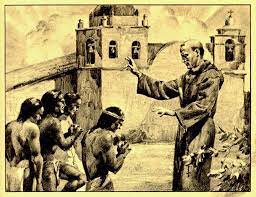
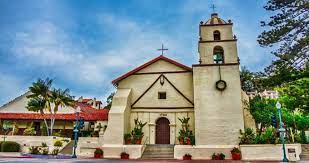
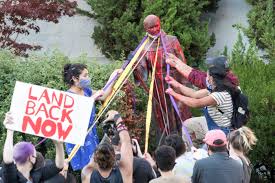

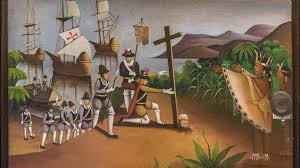

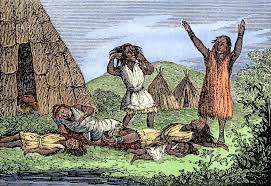

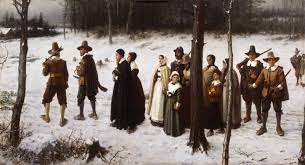





 RSS Feed
RSS Feed